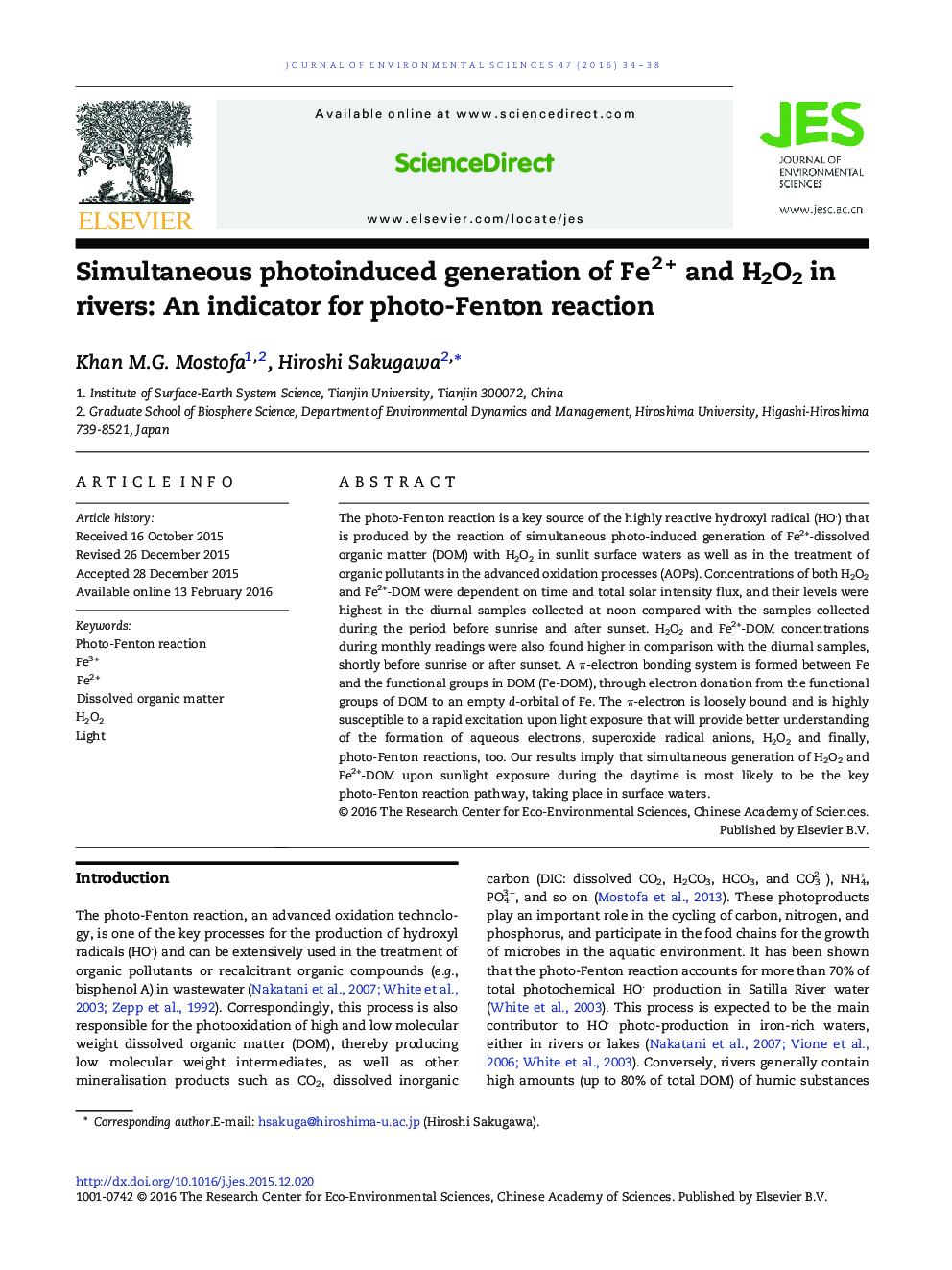| Article ID | Journal | Published Year | Pages | File Type |
|---|---|---|---|---|
| 4453598 | Journal of Environmental Sciences | 2016 | 5 Pages |
The photo-Fenton reaction is a key source of the highly reactive hydroxyl radical (HO) that is produced by the reaction of simultaneous photo-induced generation of Fe2+-dissolved organic matter (DOM) with H2O2 in sunlit surface waters as well as in the treatment of organic pollutants in the advanced oxidation processes (AOPs). Concentrations of both H2O2 and Fe2+-DOM were dependent on time and total solar intensity flux, and their levels were highest in the diurnal samples collected at noon compared with the samples collected during the period before sunrise and after sunset. H2O2 and Fe2+-DOM concentrations during monthly readings were also found higher in comparison with the diurnal samples, shortly before sunrise or after sunset. A π-electron bonding system is formed between Fe and the functional groups in DOM (Fe-DOM), through electron donation from the functional groups of DOM to an empty d-orbital of Fe. The π-electron is loosely bound and is highly susceptible to a rapid excitation upon light exposure that will provide better understanding of the formation of aqueous electrons, superoxide radical anions, H2O2 and finally, photo-Fenton reactions, too. Our results imply that simultaneous generation of H2O2 and Fe2+-DOM upon sunlight exposure during the daytime is most likely to be the key photo-Fenton reaction pathway, taking place in surface waters.
Graphical abstractFigure optionsDownload full-size imageDownload as PowerPoint slide
